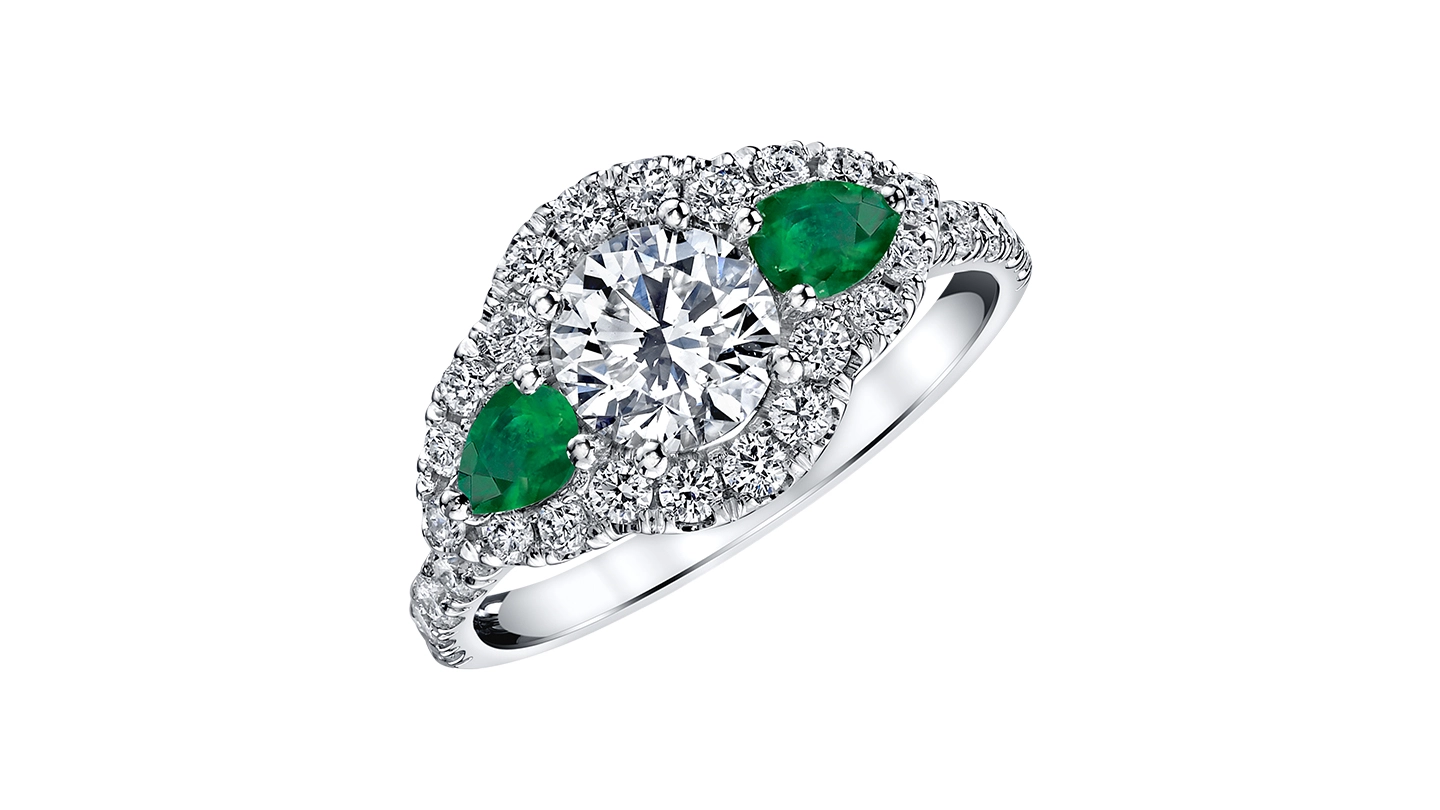Courtesy of Ziva Jewels
Engagement ring settings should be both beautiful and practical. A setting defines your ring style, adds drama to the diamond and protects it from loss or damage. The right setting and band can also make your diamond look bigger and appear even more radiant.
If you’re looking to create an illusion of size, here are some tips for engagement ring settings that can make your diamond “grow.” But first, let’s start by addressing some common “rules of thumb” or misconceptions floating around the internet.
How Diamond Shape and Weight Impact Perceived Size
Diamond Shape and Carat Weight
A diamond’s outline—round, rectangular, oval, pear, marquise—can have some influence on the overall perception of diamond size, with elongated shapes looking larger for their carat weight. However, the shape of a diamond alone does not guarantee the stone will look bigger. The same is true for diamond carat weight. Just because one diamond weighs more than another of the same shape doesn’t mean it will look bigger.
If the diamond isn’t cut well, some of its weight may be hidden in the girdle in the pavilion facets (bottom facets) where it can’t be seen. Similarly, one diamond might look bigger than another of the same shape and weight, but it may be less appealing overall because of the diamond’s cut.
Here are some examples:
- A diamond with shallow cut proportions may be physically wider and longer, but it will be far less appealing. That’s because a lot of the light that enters the crown of a shallow diamond might exit through the pavilion, making the diamond look dull and unattractive.
- A shallow pavilion depth—less than 38%—can create a “fish eye” effect, seen as an unattractive gray ring under the table. (Pavilion depth is measured as the distance from the bottom of the girdle plane to the culet.) As above, the diamond may be physically wider and longer, but the stone will have a dull, flat look.
- On marquise, pear and heart shaped diamonds, the sides near the points are called wings. If they’re too flat, they make the stone look too narrow. If they’re too rounded, they make it look short and stubby.
What’s a crown, pavilion, girdle and culet? Learn more about diamond anatomy.
What Settings Don’t Make a Diamond Look Bigger?
Explore common ring settings that may not enhance the size of your diamond as much.
White Metal Bands
Some people believe that a white metal band can act like a mirror to reflect and amplify a diamond’s size. However, a rose gold or yellow gold band could serve as a dramatic counterpoint to the diamond, making it look bigger. So, a white metal band is not a must.
Colored Gemstones
Colored accent stones provide dramatic contrast to a diamond center stone, but they don’t always make the diamond appear bigger. They can be a unique way to incorporate a loved one’s birthstone or add your own personal flair to your engagement ring.
Slender Ring Prongs
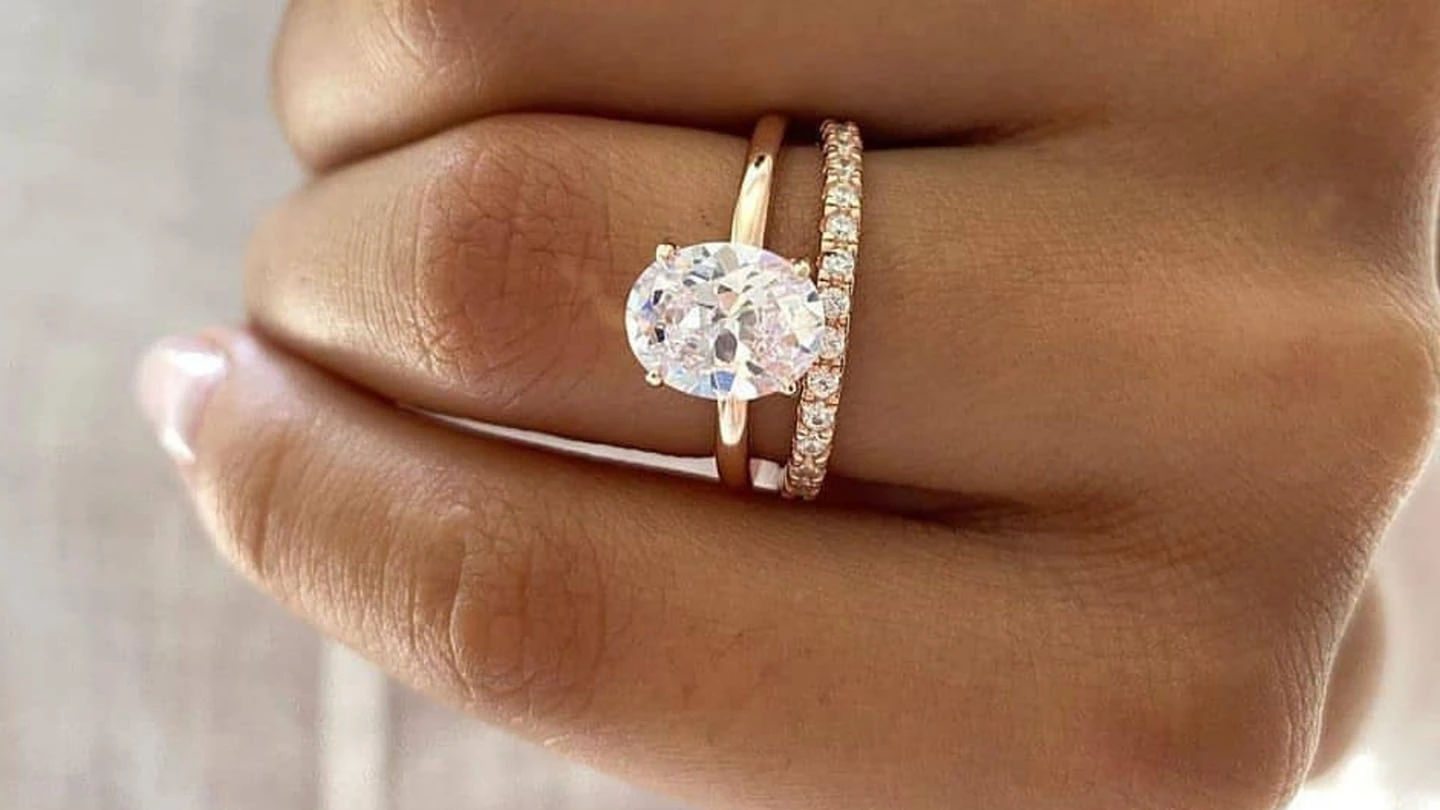
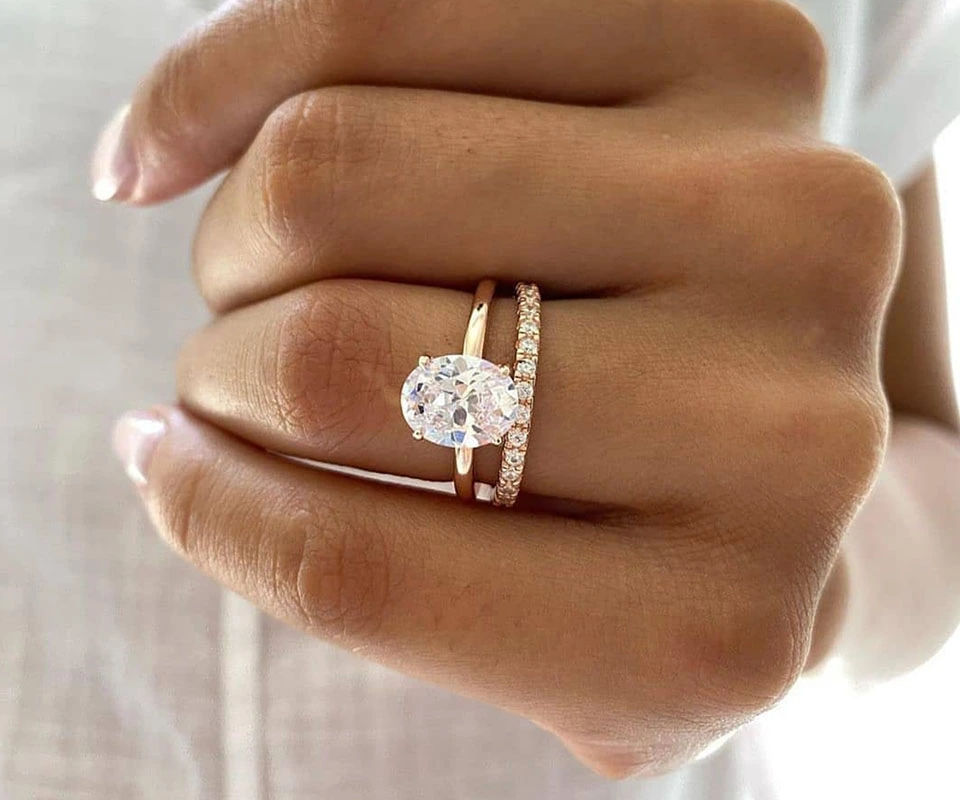
A potentially troublesome myth about engagement ring settings is that the less a prong covers a diamond, the more of the gem that’s shown, so the bigger it will look. While this may be true technically, it is not advisable. Prongs serve an essential function: they hold a diamond securely in place. Skimp on the necessary size and number of prongs, and you risk losing your diamond.
Large Ring Prongs
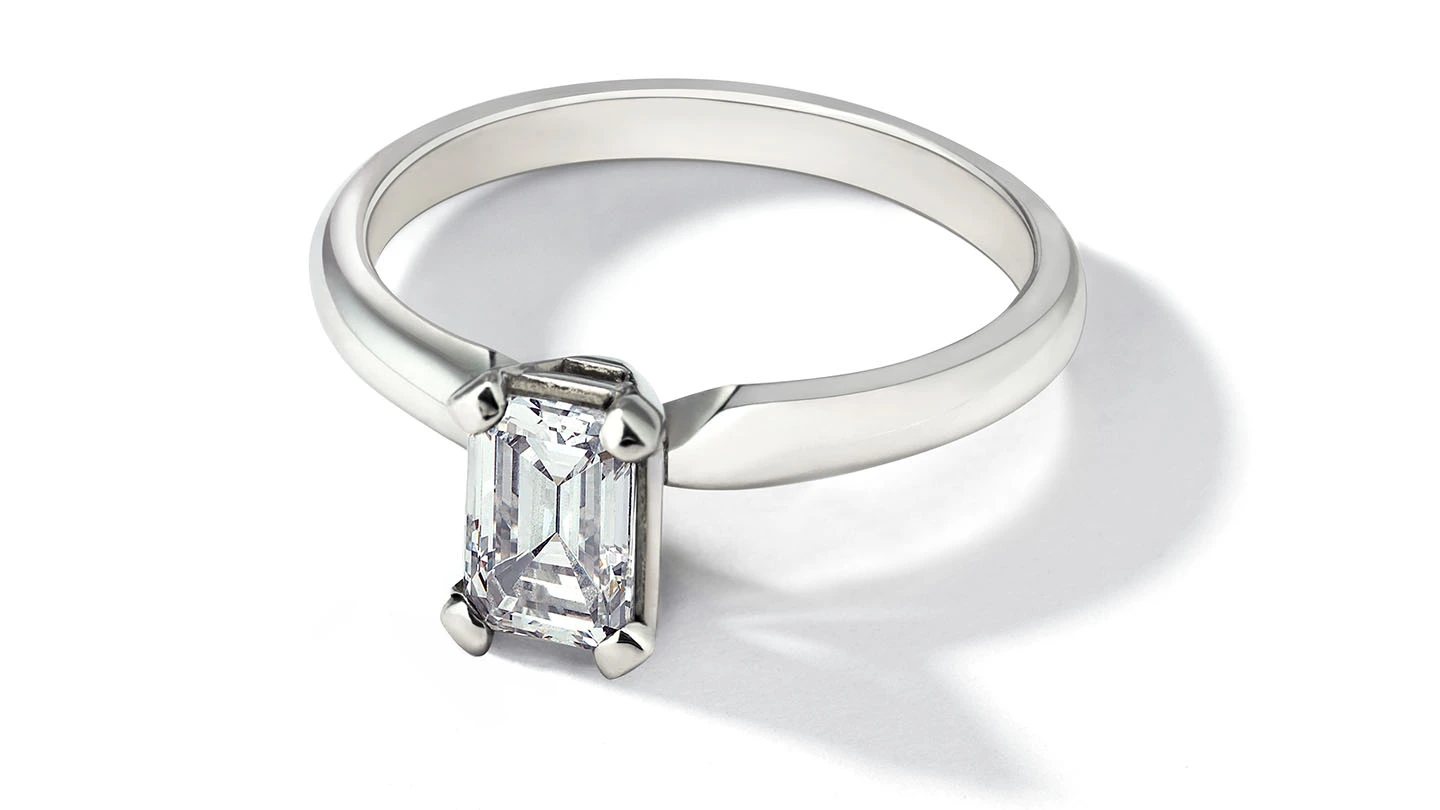
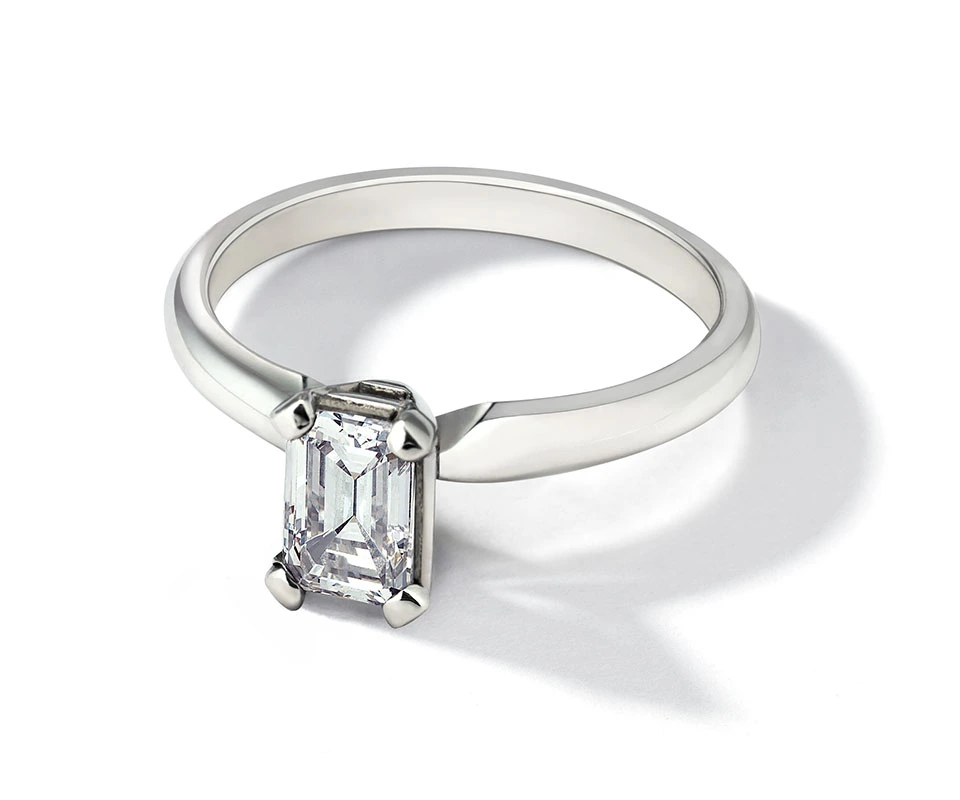
A larger than necessary prong setting can make a diamond look smaller. Bulky prongs can cover more of the diamond’s surface, obscuring its edges and reducing the visible surface area. This can diminish the diamond’s brilliance and make it appear smaller than it actually is.
Thick Ring Band
A thicker band can make your diamond appear smaller. The visual contrast between the wide band and the diamond can diminish the diamond’s prominence, reducing its perceived size. Additionally, when considering ring stacking, it’s important to choose bands that complement rather than overshadow the center diamond to maintain its visual impact.
What Settings Make a Diamond Look Bigger?
Here are some engagement ring settings to consider if you’re looking to boost the appearance of your diamond’s size.
Illusion Setting
During the Great Depression of the 1930s, when few could afford large diamonds, jewelers sometimes set a diamond in a head made of a fluted white metal. The shiny metal was made with ripples, so the whole head looked like the diamond it reflected. This setting was so successful in delivering an illusion of size that it’s still used today.
- TIP: The purpose of the illusion setting is to make a near-colorless diamond look larger, and white metal is required to achieve this particular effect. If the diamond is yellow in color, then a yellow gold illusion setting is a better choice.
- TIP: Diamonds smaller than 0.50 carat (ct) are good candidates for illusion engagement ring settings. You’d probably want to showcase a diamond 0.50 ct or larger on its own, instead of relying on the illusion setting to work its optical magic.
Cluster Setting
This engagement ring setting places several small diamonds of similar size next to each other. This technique maximizes sparkle and gives the illusion of a single diamond that is much larger in size (and more costly) than the melee diamonds used to make it.
- TIP: Diamonds of the same or similar color grades work best in a cluster setting. Diamond manufacturers know this and match color grades when producing these kinds of rings. So, you won’t have to worry about selecting the many smaller diamonds that will be part of your cluster setting.
- TIP: The more metal surrounding a stone, the more it is protected. Cluster settings have lots of metal. So, your diamonds will be better safeguarded against damage.
Halo Setting
When a ring of smaller diamonds is artfully placed around a center stone, the center stone can appear to be the size of the halo.
- TIP: Engagement ring manufacturers select the melee that makes the halo, so you won’t have to worry about picking the many small diamonds that will go into the engagement ring setting.
- TIP: A diamond center stone weighing 0.50 ct or more works best in this kind of setting because the melee in the halo will enhance it. You probably wouldn’t want to use a smaller diamond, since it would be too close in size to the melee. That combination would probably look like a pavé set ring with one diamond (the center stone) somewhat larger than the rest.
- TIP: The prongs on halo diamonds tend to wear out faster. Should you go with this style, be sure to have your ring routinely checked by your jeweler.
Pavé Setting
To achieve this popular technique, many diamonds 0.20 ct or smaller are set into tapered holes in a metal surface, nestled close to the melee stones next to them. Pavé creates an appearance of uninterrupted diamonds in the band, which can make the center stone look larger.
- TIP: Pavé set diamonds in engagement ring settings are typically very secure, as the diamonds are set into metal. However, should a diamond fall out, it is more difficult for a bench jeweler to replace it.
- TIP: Avoid engagement ring settings with pavé set diamonds on the bottom of the shank. This area of the ring is exposed to a lot of friction, so the diamonds are more easily lost or damaged.
Bezel Setting
In this setting style, a band of metal surrounds the diamond’s girdle. As a result, the diamond’s circumference may appear to be larger. Bezel engagement ring settings also afford extra protection against accidental bangs and bumps.
- TIP: The bezel setting is generally used for round and oval diamonds. It is more difficult to create a bezel setting for other shapes, such as square and marquise diamonds.
- TIP: Like rock climbing? Playing lacrosse? Vigorous exercise? The bezel setting protects the center stone, so it is a great choice for active people.
- TIP: A bezel setting could deaden the brightness of a poorly cut diamond.
Invisible Setting
For this technique, small diamonds are cut with grooved pavilions and then slipped into a thin wire framework. This eliminates the need for prongs and allows the gems to be set against each other. The result is that the entire diamond is visible, and groups of diamonds can look like one large gem.
- TIP: There is a drawback. Should a diamond in an invisible setting be damaged, it is extremely difficult to repair or replace it. So invisible diamond engagement ring settings are probably not a good idea for very active individuals.
Other Tips to Make Diamonds Look Bigger
Choose a Thin Shank or Band
Here’s a way to trick the eye. A thin band can make a diamond look larger. Similarly, a thick band might overshadow the diamond.
Add Side Stones to Your Engagement Ring Setting
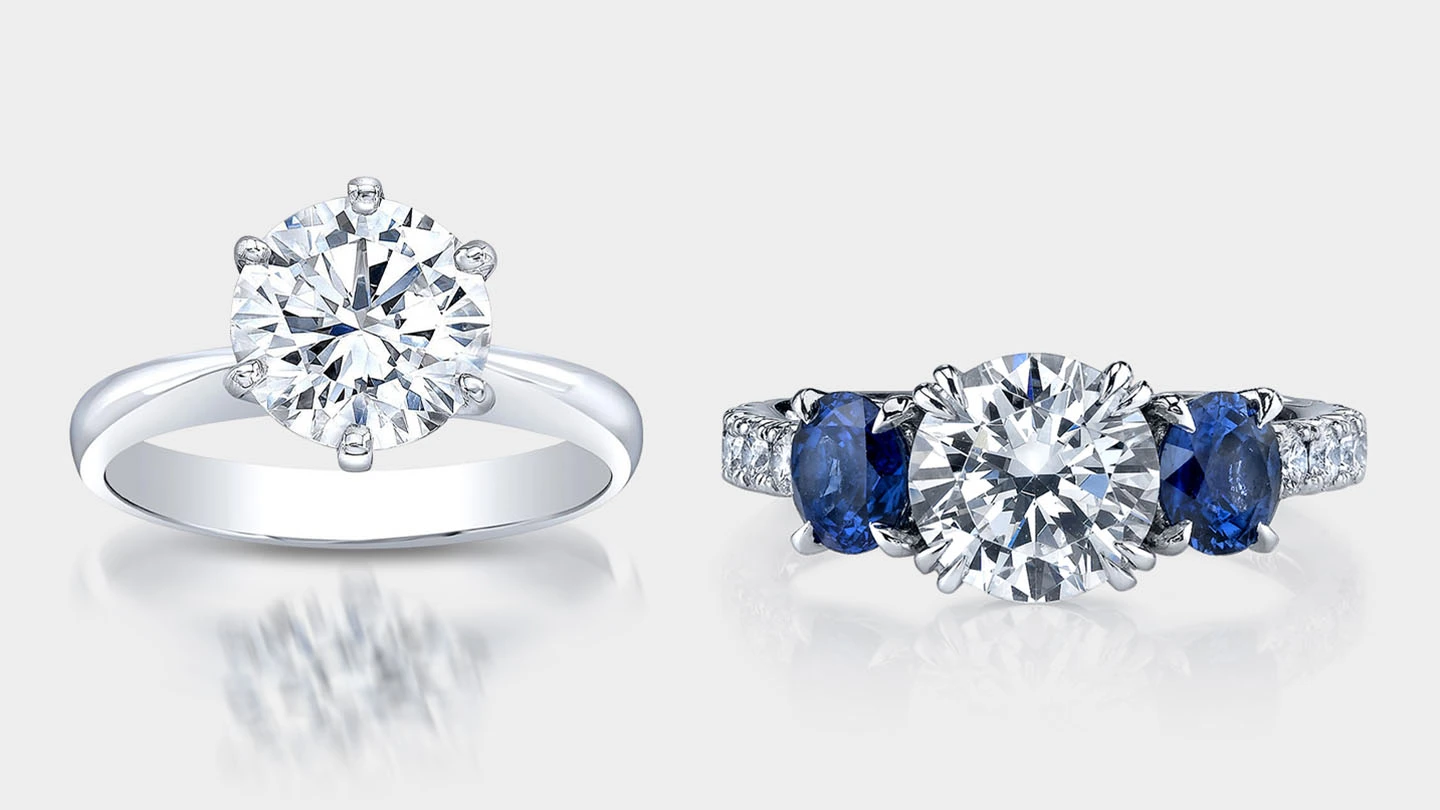
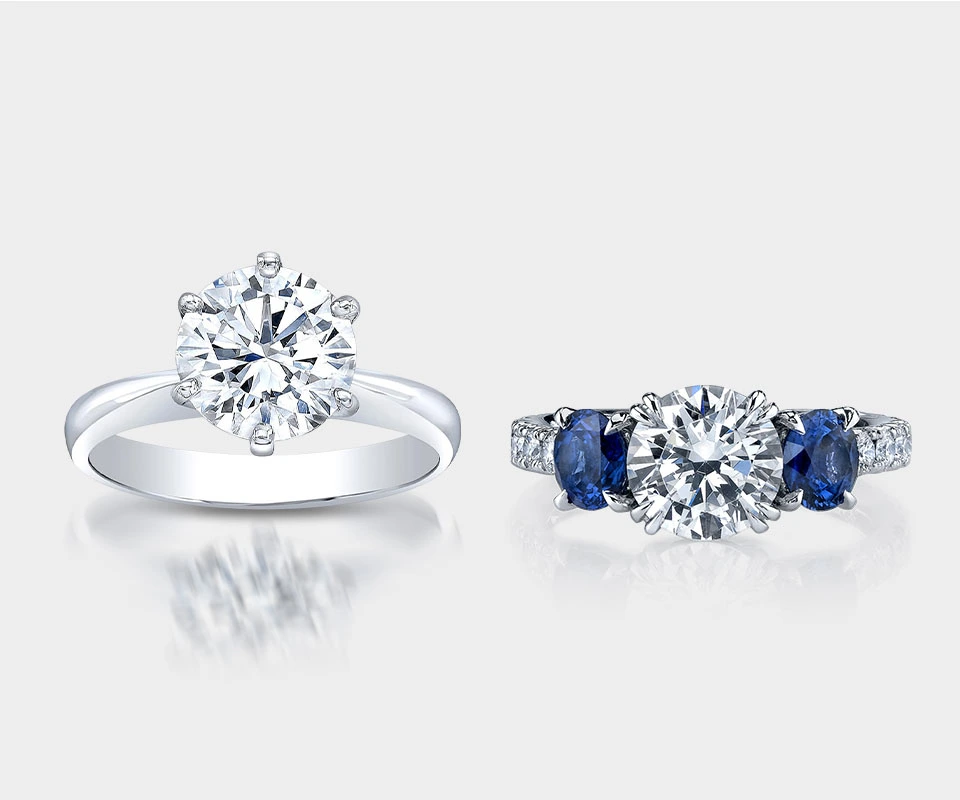
This is a great way to add sparkle and potentially size to an engagement ring—and the options are endless. You could add a diamond baguette on each side of the center stone. You could pick colored stones to create contrast. You could use different colored metals around the side stones.
Unlike the melee used for pavé and halo settings, you may have the opportunity to choose the side stones. If you are uncomfortable making the choice, read our advice on choosing engagement ring side stones to get you started. If you have any questions, ask your jeweler for help, they will have a trained eye.
Speaking of diamond sparkle, here are some tips and tricks to get the most sparkle out of your diamond engagement ring.
Higher Setting
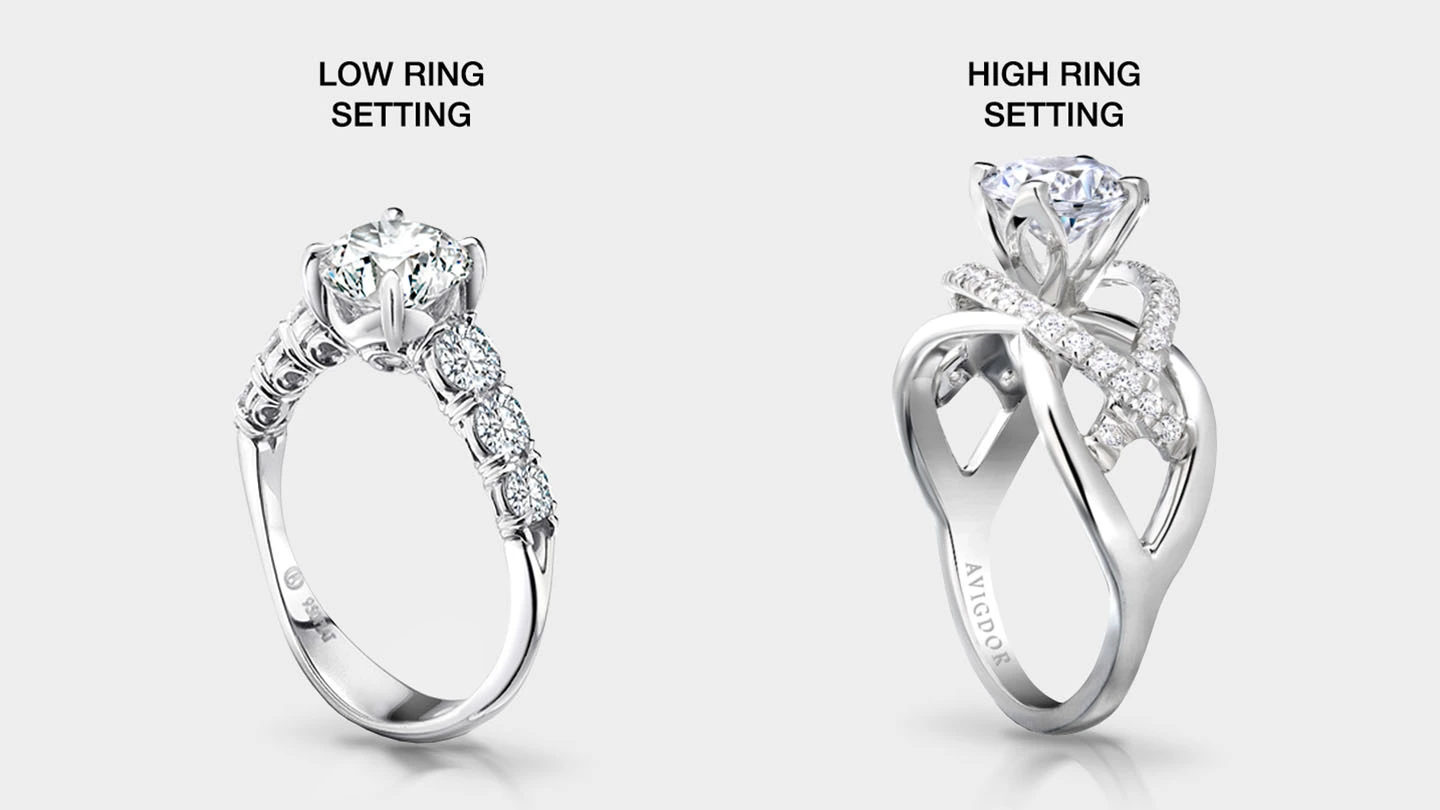
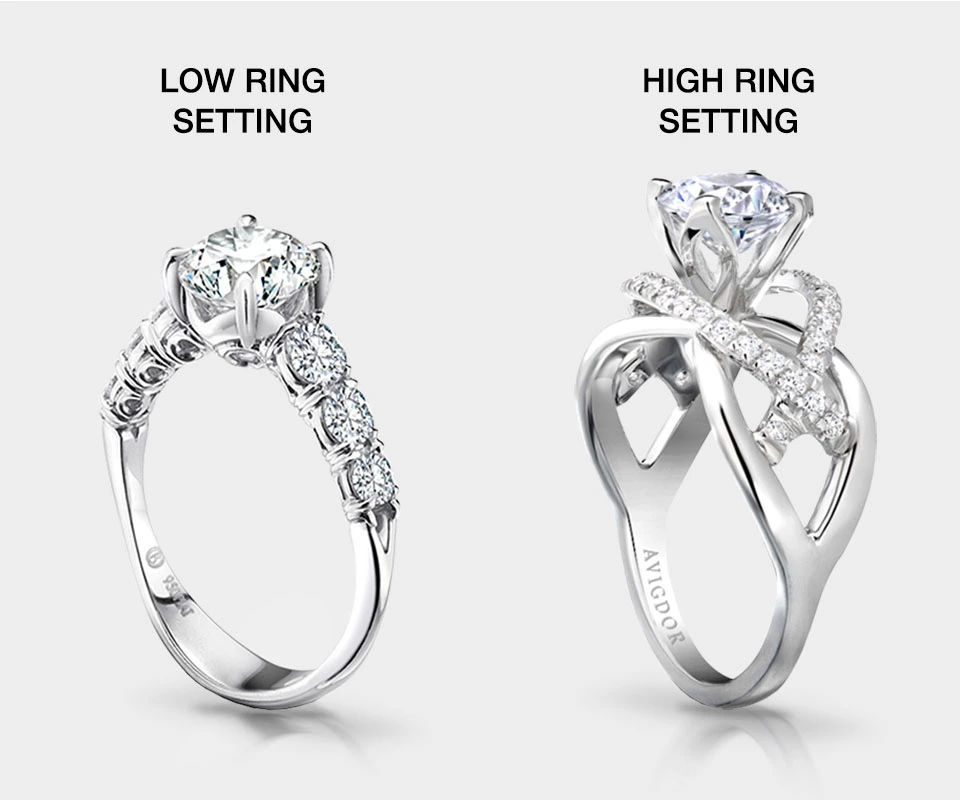
A higher setting can make your diamond look bigger. When a diamond is placed in a high-setting engagement ring, it has more angles to catch light from, enhancing its brilliance and sparkle, which creates the illusion of a larger stone.
Additionally, this elevated position allows more of the diamond to be visible above the band, giving the impression of greater size. However, it’s important to be cautious when buying a ring with a higher-set diamond, as it makes it more susceptible to damage.
Keep Your Ring Clean
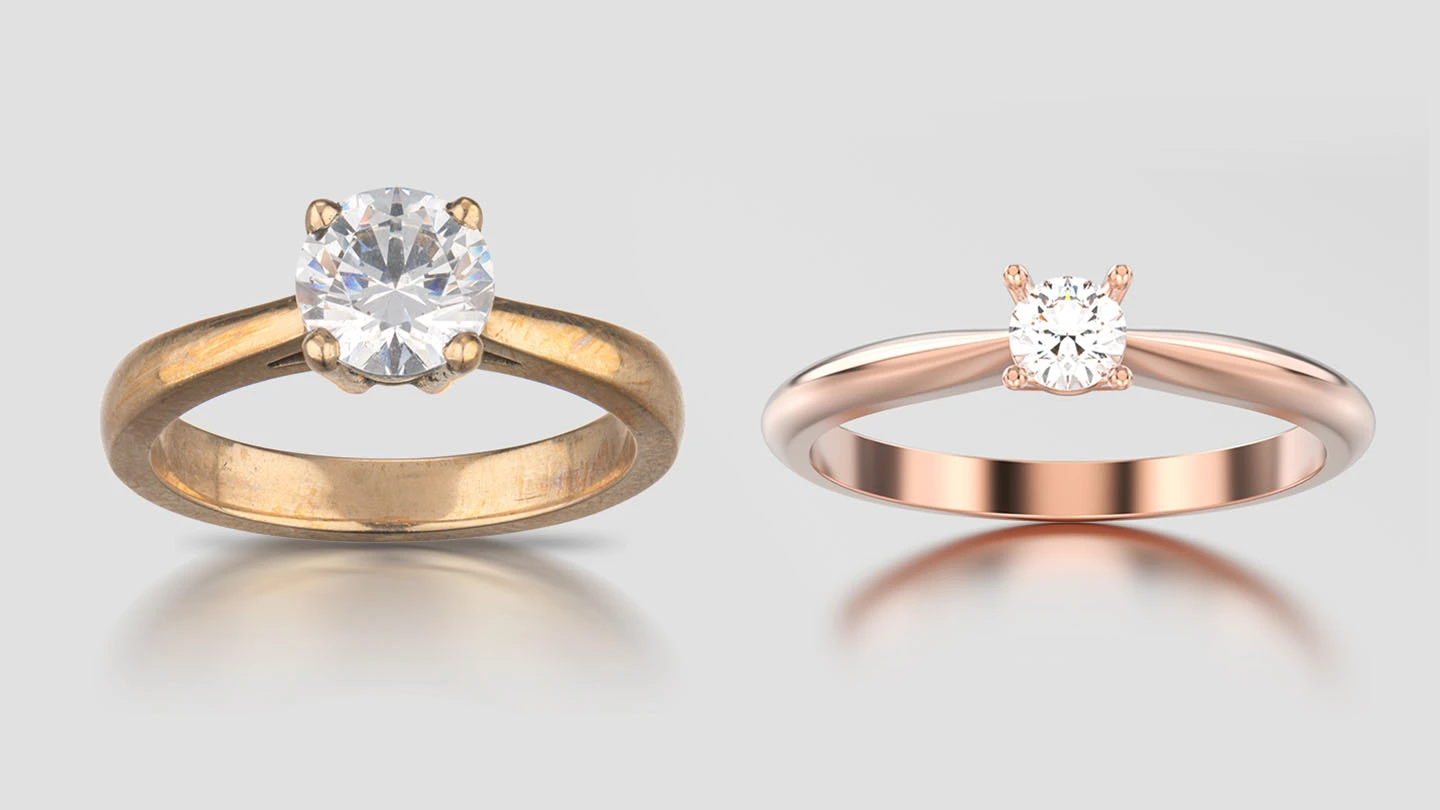
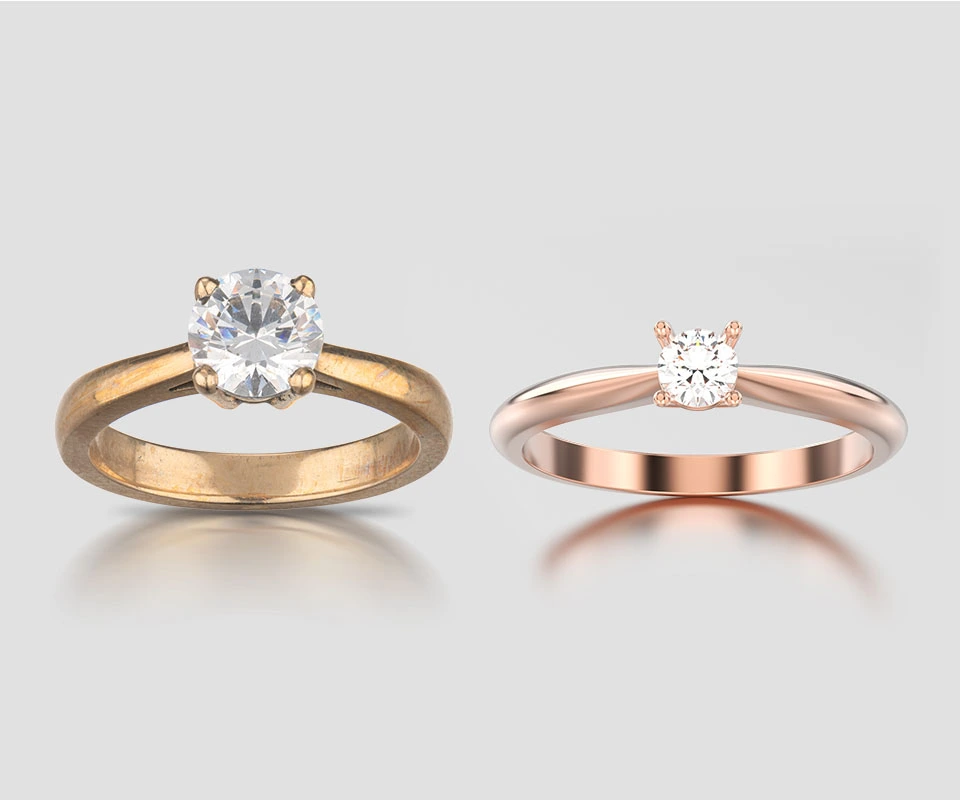
Maintaining the cleanliness of your engagement ring is crucial for maximizing its sparkle, appearance and size. A clean diamond looks more brilliant and can even appear larger due to its increased ability to reflect light. Regularly clean your ring at home with mild soap, warm water and a soft toothbrush. Additionally, schedule professional cleanings with your jeweler once or twice a year for a more thorough cleaning.
Why Purchasing Diamonds with GIA Grading Reports Are Important
Regardless of the diamond size you choose, it is essential to choose a diamond with a GIA report to ensure you are getting a genuine, high-quality stone.
A diamond grading report, sometimes referred to as a certification in the trade, provides an unbiased evaluation of a diamond’s characteristics, such as cut, color, clarity and carat weight, guaranteeing transparency and value for your purchase.
Why Trust GIA
Trusting the Gemological Institute of America (GIA) adds an extra layer of assurance. At GIA, we are renowned for our rigorous standards and integrity in diamond grading.
Our diamond grading reports ensure that the diamond you purchase is accurately represented, giving you confidence in the quality and authenticity of your engagement ring.
Our consistent and reliable evaluations make us the most trusted name in diamond grading, ensuring you receive a diamond that meets the highest standards of disclosure and transparency.
